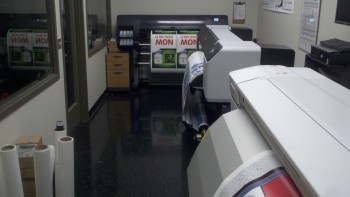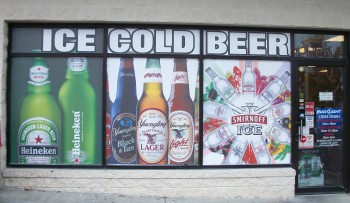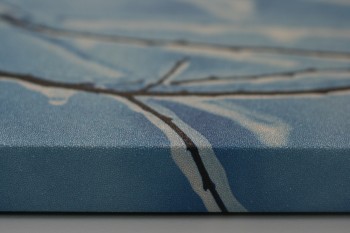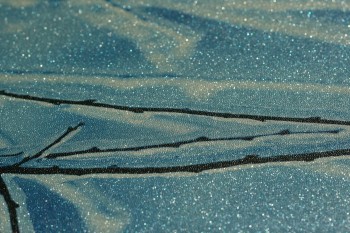The top beverage distributor in Delaware requires a top-notch print shop to win space at the point of sale and build the brands they sell. Standard Distributing Co., New Castle, Del., has the advantage of quality and quantity at the point of sale through the work of its print shop, led by sign industry veteran Matt Glick.

Before joining the Standard Distributing team nine years ago, Glick had worked with grand format solvent VUTEk printers. Glick already knew the ins and outs of these 10-foot-wide industrial machines and has translated that experience into an efficient and productive print shop.
Glick recently brought in Epson’s new SureColor S30670 low-solvent printer that he got from LexJet to add to a printer arsenal that also includes an Epson GS6000 low-solvent and HP Designjet Z6100 aqueous printer.
 “We had another solvent printer for about eight years and it wasn’t producing the quality and speed we needed, so we got the Epson SureColor from LexJet. The clarity and visibility of the colors is much better; the colors just look richer. Everything I print on the Epson is clear and the resolution is better, and there’s no smell, and the speed is fantastic,” explains Glick. “One prints scrim banners and window perf, the other prints adhesive-backed vinyl, and the Z6100 prints paper posters, banners and temporary stuff. It speeds up production when I don’t have to worry about changing materials every time there’s a different job; we can nest them together on the same printer.”
“We had another solvent printer for about eight years and it wasn’t producing the quality and speed we needed, so we got the Epson SureColor from LexJet. The clarity and visibility of the colors is much better; the colors just look richer. Everything I print on the Epson is clear and the resolution is better, and there’s no smell, and the speed is fantastic,” explains Glick. “One prints scrim banners and window perf, the other prints adhesive-backed vinyl, and the Z6100 prints paper posters, banners and temporary stuff. It speeds up production when I don’t have to worry about changing materials every time there’s a different job; we can nest them together on the same printer.”
 In addition to the print production horsepower provided by those printers, there’s also a Seal 410 laminator for mounting and laminating, a rotary cutter and a 72″ large-format cutter for finishing.
In addition to the print production horsepower provided by those printers, there’s also a Seal 410 laminator for mounting and laminating, a rotary cutter and a 72″ large-format cutter for finishing.
Glick estimates that about 60 percent of the 400-600 designs created in the shop each month are prints applied to Coroplast, 30 percent banners and 10 percent specialty graphics, like perforated window film, floor graphics and counter-top graphics.
For banners, Glick’s material of choice is LexJet TOUGHcoat Water-Resistant Polypropylene; for adhesive-backed applications on Coroplast and aluminum it’s LexJet Simple Adhesive Vinyl SUV; and for window graphics it’s LexJet Simple Perforated Window Vinyl (60/40). Glick adds that perforated window vinyl graphics are an effective way to get tap handles into an account
“My biggest challenge is over-marketing our accounts. We want to be as visible as possible without being so busy that we lose the message in the process,” explains Glick. “Simple is always better and consistency is another important ingredient. From a production standpoint it’s been helpful to work with a vendor like LexJet. My rep, Kyle Stephens, has been very helpful with my questions, he’s accessible, and he always seems to have the shipping down so we get the products we need when we need them; the customer service has been outstanding.”




